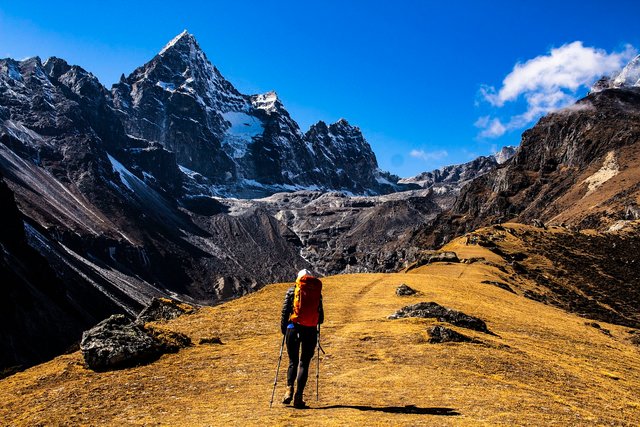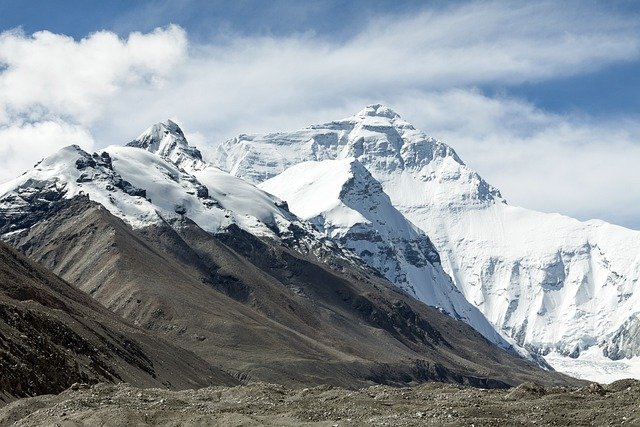Geographic exploration of nature (MOUNT EVEREST)


History of mount everest
Mount Everest, the world's highest peak at 29,032 feet (8,848 meters), is located in the Himalayas on the border between Nepal and Tibet. Here's a brief history:
First Reconnaissance: The mountain was first surveyed by the British in the early 20th century. In 1921, a British reconnaissance expedition explored the region.
Early Attempts: The first serious attempts to climb Everest began in the 1920s and 1930s. Expeditions led by George Mallory and later by John Hunt aimed to reach the summit but faced numerous challenges.
First Ascent: Sir Edmund Hillary of New Zealand and Tenzing Norgay, a Sherpa of Nepal, successfully reached the summit on May 29, 1953, as part of a British expedition led by John Hunt.
Later Expeditions: Over the years, numerous expeditions from various countries attempted the climb, some successful, while others faced tragic outcomes.
Commercialization: In recent decades, Everest has become a popular destination for commercial expeditions, leading to concerns about overcrowding, environmental impact, and safety.
1996 Everest Disaster: The events of the 1996 climbing season, including multiple fatalities, were documented in books and films, notably Jon Krakauer's "Into Thin Air."
Everest Today: Climbing Everest remains a challenging and sought-after adventure. The region continues to draw climbers, trekkers, and adventurers from around the world.
The history of Everest is marked by triumphs and tragedies, reflecting the risks and rewards of high-altitude mountaineering.
HIDDEN FACTS OF MOUNT EVEREST
Bodies on Everest:
Due to the harsh conditions and extreme altitudes, some climbers who have perished on Everest remain there due to the difficulties in recovery. These bodies are often referred to as "Green Boots" and serve as somber landmarks.
Hidden Crevasses:
Deep crevasses are concealed beneath the snow and ice, making certain sections of the mountain unpredictable and dangerous. Climbers and expedition teams meticulously navigate around these hidden hazards.
Jet Streams:
The powerful jet streams at high altitudes around Everest are not visible to the naked eye but significantly impact weather and climbing conditions. These fast-flowing air currents can reach speeds of over 200 miles per hour.
Icefall Movements:
The Khumbu Icefall, a perilous section on Everest, constantly shifts and changes due to the glacier's movements. These subtle changes are often unseen but can pose a significant threat to climbers.
Microorganisms in Ice:
Recent studies have revealed the presence of various microorganisms in the ice on Everest. These hidden life forms survive extreme conditions, showcasing the resilience of life even in seemingly inhospitable environments.
Yeti Legends:
The myth of the Yeti, or the "Abominable Snowman," has been associated with the Everest region for centuries. While there is no scientific evidence supporting the existence of Yetis, the legend adds an intriguing layer to the mountain's mystique.
Hidden Artifacts:
Over the years, climbers have left behind artifacts on Everest, ranging from old equipment to discarded oxygen bottles. These hidden remnants tell the story of Everest's history and the challenges faced by those who dared to conquer it.
Radioactive Isotopes:
Studies have detected elevated levels of certain radioactive isotopes in the snow on Everest. These findings are believed to be the result of nuclear weapons testing and industrial activity, highlighting the global reach of human impact on the environment.
Sherpa Culture:
The rich cultural heritage of the Sherpa people, the indigenous inhabitants of the Everest region, is often hidden from the spotlight. Their traditions, beliefs, and contributions to mountaineering are integral parts of Everest's broader narrative.
These hidden facts contribute to the allure and mystique of Mount Everest, showcasing the mountain's complexity beyond its towering summit.
FUN FACTS OF MOUNT EVEREST
Tallest Mountain on Earth:
Mount Everest is the highest point on Earth, towering at 29,032 feet (8,848 meters) above sea level.
Named After a Surveyor:
The mountain is named after Sir George Everest, a British surveyor general of India, although he objected to having the mountain named after him.
Growth Spurt:
Everest is still growing! Due to tectonic activity, it's gaining a few millimeters in height each year.
First Ascent:
Sir Edmund Hillary from New Zealand and Tenzing Norgay, a Sherpa of Nepal, were the first climbers to successfully reach the summit on May 29, 1953.
Challenging Weather:
The weather on Everest can change rapidly. Wind speeds can reach over 200 miles per hour, and temperatures can drop as low as -80°F (-62°C).
Sherpas:
Sherpas, an ethnic group from Nepal, are known for their unparalleled climbing skills and often serve as guides and support for climbers attempting to summit Everest.
Dead Zone:
The area above 26,247 feet (8,000 meters) is known as the "Death Zone" due to the lack of oxygen, making it extremely challenging for climbers to survive for extended periods.
Traffic Jams on the Summit:
During peak climbing seasons, the summit of Everest can get crowded, leading to "traffic jams" as climbers wait in line to reach the top.
Yeti Footprints?
Despite numerous expeditions, no conclusive evidence of the existence of the Yeti has been found on Everest. Yeti footprints reported in the past were likely misidentifications.
Fastest Ascent:
The fastest ascent of Everest was achieved by climber Pemba Dorje Sherpa in 2004, who reached the summit in just 8 hours and 10 minutes.
These fun facts highlight the extraordinary nature of Mount Everest and the various elements that make it a fascinating and challenging destination for climbers and adventurers.